Kids and vegetables don’t always seem to go hand in hand, but the importance of vegetables for our health and the health of our microbiome is becoming more and more evident. If children are introduced to vegetables at early ages, chances are they will naturally be inclined to eat more vegetables. If vegetables are part of normal family meals, kids will also eat more of them. However, if that ship has sailed and now you want to increase the number of vegetables your kids are eating, here’s a list of 10 tips that you can incorporate into your life.
- Pre-dinner Sticks
- Smoothies
- Ants on a Log
- Lettuce Leaf Boats
- Sweet Potato Chips
- Soup
- Stuffed Mini Sweet Peppers
- Crudité with Dips
- Plant a Garden with Your Children
- Cook with Your Children
Tip number 1: Pre-dinner Sticks
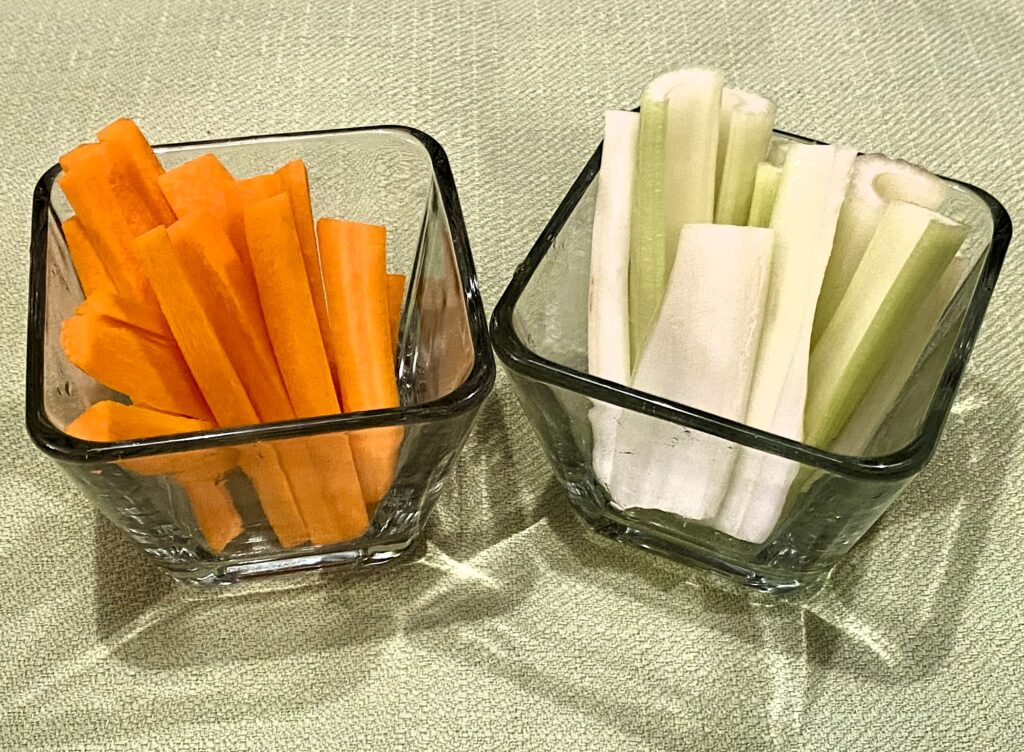
Just put out a bowl of vegetable sticks – carrot sticks, celery sticks, pepper slices.
This is my favorite and easiest of all the tips. I noticed that when I was making dinner my kids were always hungry before the meal was completed. They wanted to snack on something before dinner. If they did, they would inevitably snack on something less healthy than the meal and end up not having as much room for actual dinner. I found that if I cut up carrots or celery or peppers and put them in bowls on the table the kids would just eat them instead of reaching for chips or less healthy options. Often the bowl of carrots would be gone before dinner started. This was much better than bread served at restaurants because it’s not as filling and leaves more room for the actual meal. In addition, the vegetables are packed with vitamins, phytonutrients, and fiber which benefit the gut microbiome and promote overall health.
Tip number 2: Smoothies
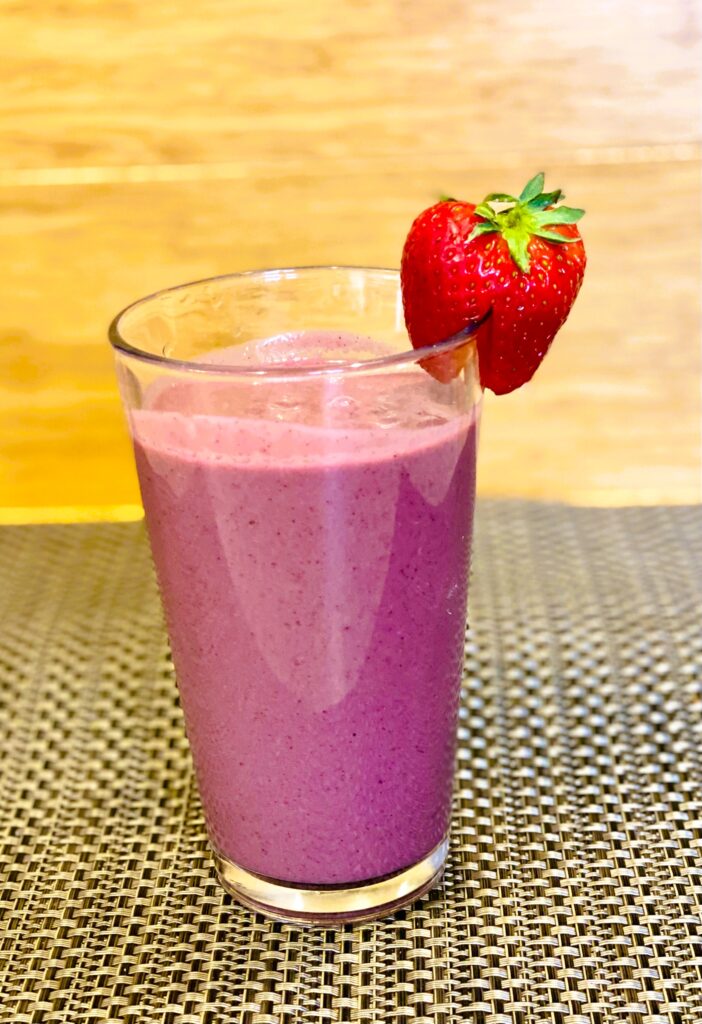
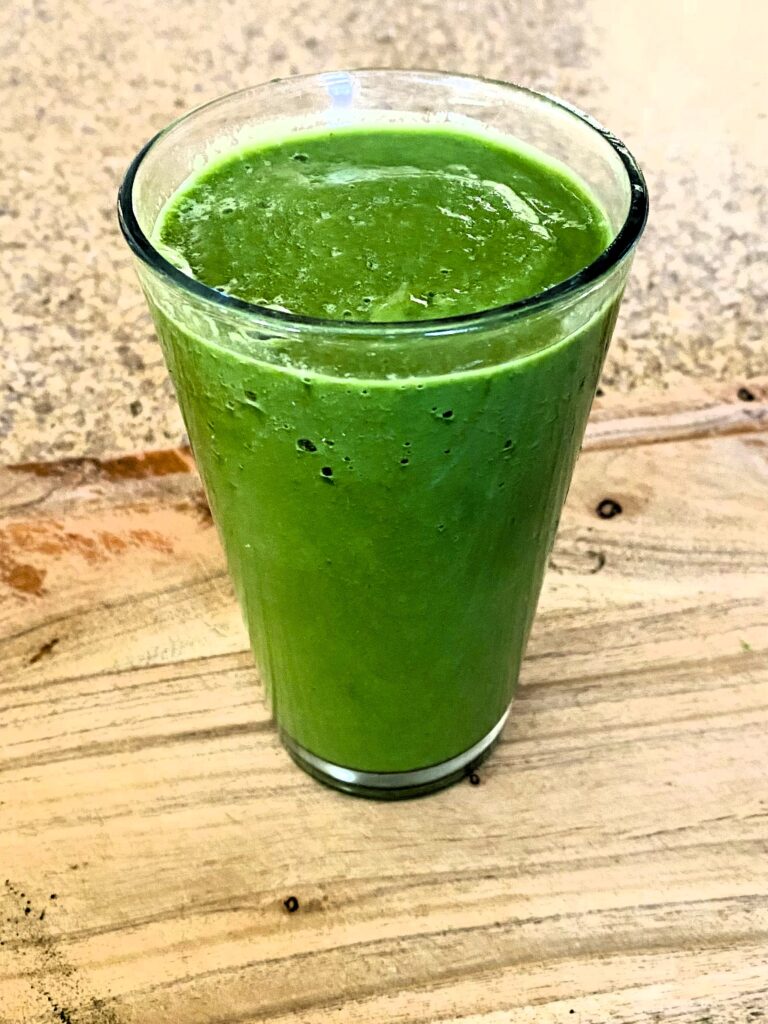
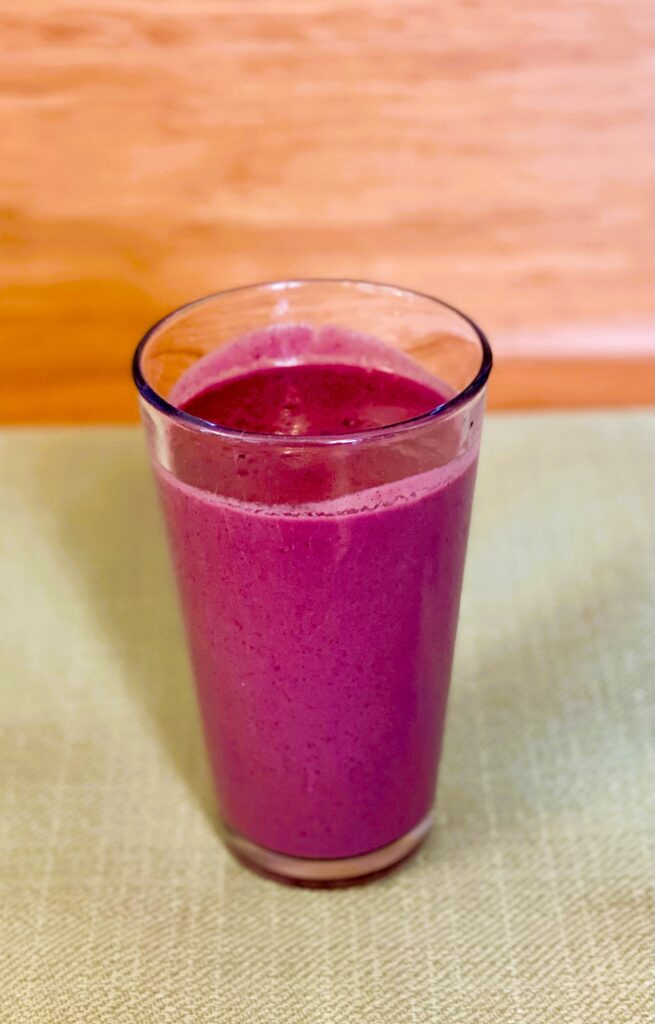
Whip up a quick smoothie using kale, spinach, carrots, or beets plus some water, a banana, and some frozen fruit.
Smoothies are an easy and slightly sly way for kids to eat their vegetables. You can disguise the flavor of many vegetables by combining them with a little bit of fruit and some water. You can even add some protein powder if you would like that macronutrient boost. Try out different flavor combinations to see what you and your kids like. One trick I use frequently is to add a few slices of raw beet to a smoothie. The beets add a bright pink hue to the smoothie which is generally a much more appetizing color than the dark green browns I typically end up with! Plus, you get the added benefit from the antioxidants that give beets their color. Carrots are naturally sweet and create a pleasant orange color especially when blended with mangoes. If you’re new to smoothies, start out with a simple blend. Pick your vegetable of choice, add water, a little frozen fruit, and a banana or an apple and blend until smooth. You can make this in a blender or a bullet-style mixer or a Vitamix®. Smoothies were a go-to for my kids while in college as a quick healthy vegetarian breakfast. I sent them each off to college with a Magic Bullet®. They would blend up a banana, a handful of spinach, and a little frozen fruit then just grab and go with the mixer container that doubled as a mug. You can find my recipe for a vitamin B packed smoothie here.
Tip number 3: Ants on a Log
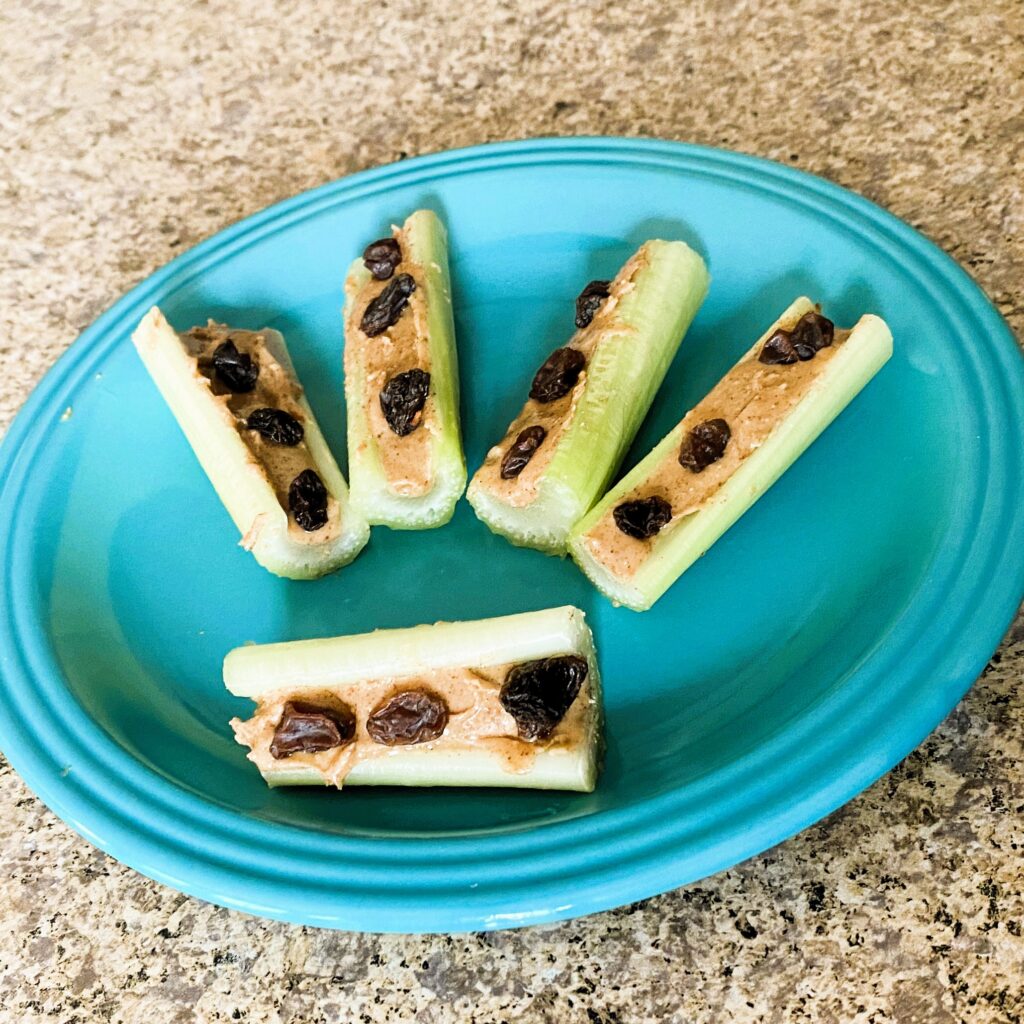
Simply wash and cut celery into 3-inch long sections, fill with peanut butter and top with a few raisins
This was such a fun treat for my children when they were little, although adults can enjoy it too. Celery provides that wonderful crunch, while the peanut butter adds a little salty creaminess, and the raisins a touch of sweetness. Celery is an amazing vegetable that is often underrated. It’s filled with water and mineral salts which is a boon as many people are chronically dehydrated. You can use regular or unsalted peanut butter; personally I like salted. Sodium is a concern for many Americans. but that’s predominantly because of the high amount of sodium in processed food. If you switch to a whole food diet you shouldn’t have an issue with sodium. I recommend using organic raisins because grapes and raisins are frequently on the Environmental Working Group’s Dirty Dozen list which means they have high levels of residual pesticides. Ants on a log are easy to make and a good afternoon or after school snack. You can use sunflower seed butter, almond butter, or another nut butter in place of the peanut butter if peanuts aren’t your thing or you’re concerned about allergies. A tip for packing these in lunch boxes is to place two filled celery sticks together with the peanut butter sides facing each other. Get the kids involved in making this snack. You may want to do the cutting or supervise the cutting then let the kids fill the celery with peanut butter and pop on the raisins.
Tip number 4: Lettuce Leaf Boats
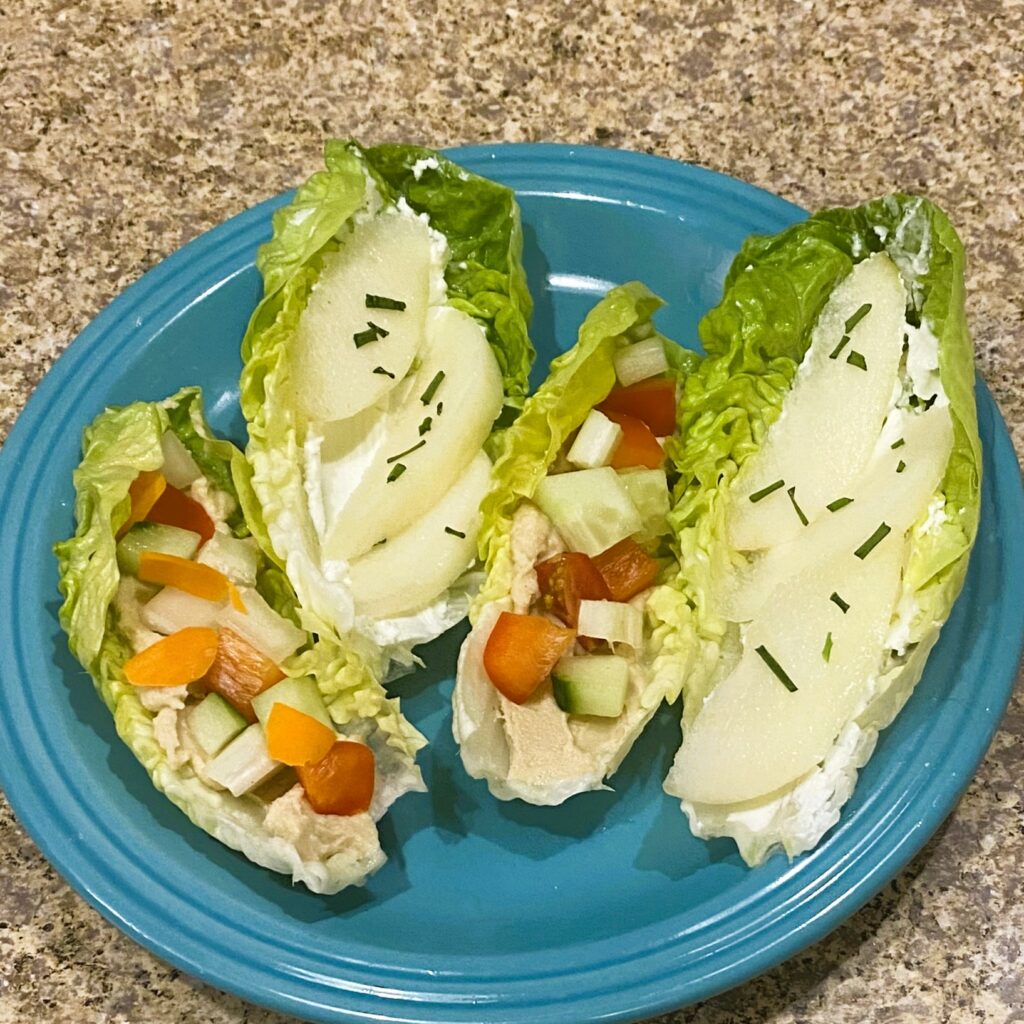
Wash some small romaine, Little Gem, or radicchio lettuce leaves and fill with other chopped veggies and a bit of dressing or salsa or hummus.
These lettuce leaf boats make great appetizers or can serve as a side salad. They’re an easy finger food and perfect for small hands. The inner leaves of a head of romaine make perfect little boats. You can get creative about what you fill them with. Filling them with goat cheese topped with thinly sliced pears and a squeeze of lemon makes a delicious quick snack. You can go Mexican with some chopped peppers and a little corn topped with a spoon of salsa. Hummus is an excellent filler as well and provides all the benefits of legumes from the chickpeas. Another great filler is a homemade egg salad or even just sliced hard boiled eggs. Try filling them with my lime-garlic chickpeas for a delicious healthy appetizer. Find the lettuce leaf boat recipe here. You can even put out a plate of lettuce leaves and a few different fillings and let the kids fill their own.
Tip number 5: Sweet Potato Chips
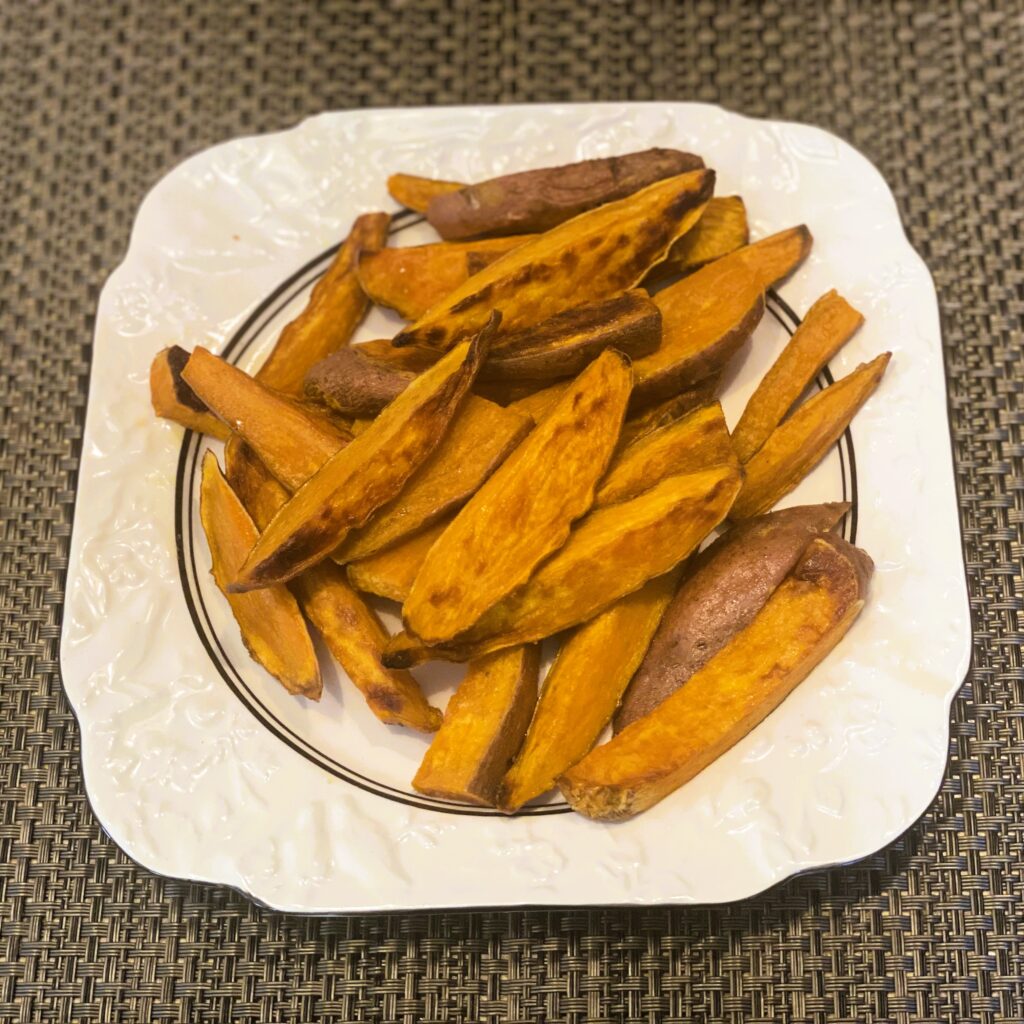
Sweet potato slices tossed with olive oil and salt and roasted till light golden brown.
Sweet potatoes have a wealth of nutrients.They have incredible levels of vitamin A in addition to being a great source of vitamins B3, B5, B6, and C, manganese, copper, and potassium. This simple preparation method creates a treat that’s crunchy on the outside and creamy inside with a hint of salty and sweet tastes. Try these in place of french fries. It may take a little getting used to, but maybe not; they might just love them. Plus they are a lot healthier than french fries cooked in seed oils. Simply slice the sweet potatoes roughly the size of french fries, toss with a little olive oil and salt and roast. You can find my recipe for sweet potato chips here. Sweet potatoes aren’t for everyone – if they are not for your children, try this method with yellow, russet, or even purple potatoes.
Tip number 6: Soup

Pureed soups loaded with vegetables are tasty (and a bit sneaky) way to feed your children a wide variety of vegetables
You can easily get a serving or two of vegetables by eating pureed soups. Spinach and broccoli may not appeal to children as they are, but in soups they just might. All of my children love cream of broccoli soup. It’s very easy to make and sure to please. Other soups like butternut squash and carrot ginger might also appeal to your children. These soups typically contain at least three different vegetables and another handful of spices. Just one serving of soup can provide you with 10 different plant foods which is one third of the way there to reach a goal of 30 different plant foods for the week. Butternut squash soup can be made with apples to make it a little sweeter and possibly more appealing to young palates. Creamy soups made with pureed vegetables can serve as a comfort food. You might even be able to slip in some pureed vegetables to an existing soup. However, beware of canned soups. They are generally not a good food because they’re heavily processed and typically contain high amounts of sodium and other compounds that aren’t healthy. Making your own soup is so simple. You can buy high quality vegetable broth or even make your own in large batches and freeze. Use vegetable broth instead of water when you cook your soup to add more flavor. Find my butternut squash soup recipe here.
Tip number 7: Stuffed Mini Sweet Peppers
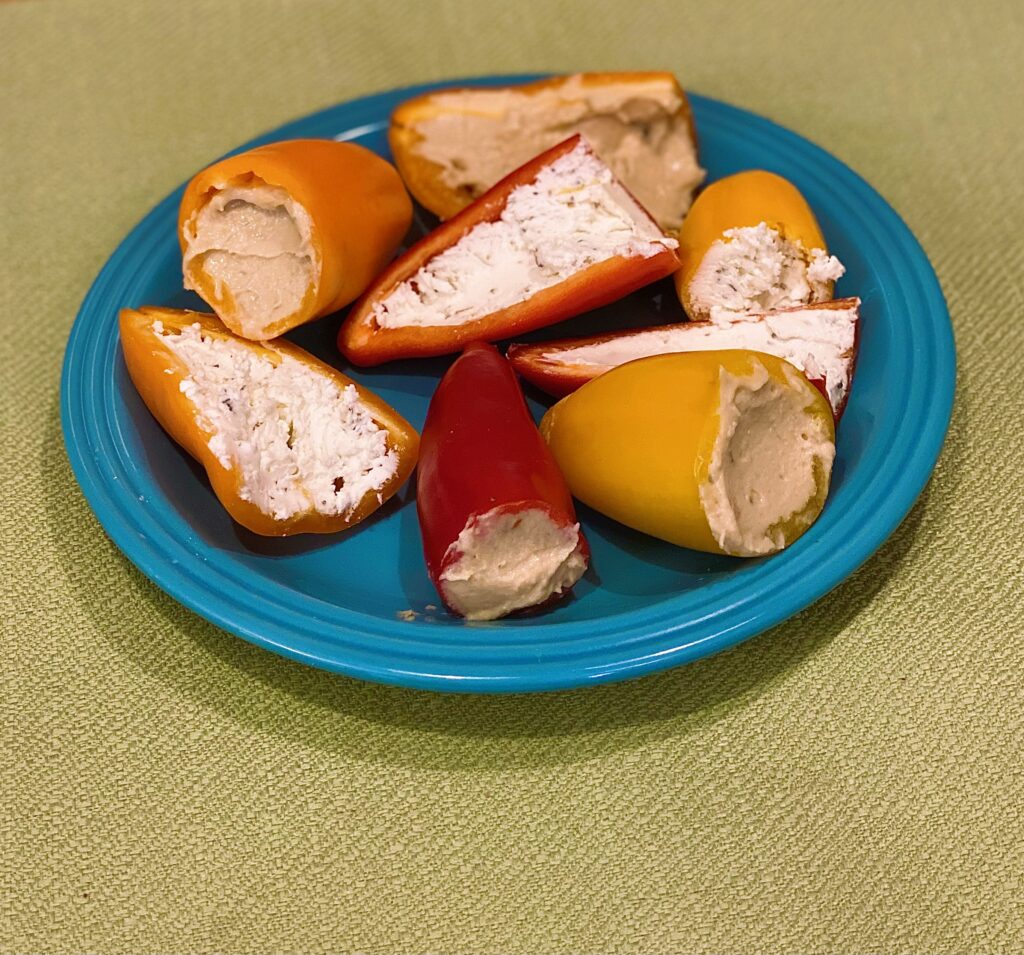
Mini sweet pepper halves filled with herbed cream cheese, goat cheese, hummus, or tzatziki.
These little peppers make wonderful appetizers, a side dish, or even a lunch box treat. Simply slice the sweet peppers in half, pull out the seeds and fill with your choice of filling. You can mix cream cheese with some herbs like dill, chives, thyme, basil or even some pepper jelly. Another option is goat cheese mixed with herbs. Other filling ideas are hummus or tzatziki. Children love finger food that is perfectly sized for them. These peppers check those boxes. You can even enlist the children in the filling process.
Tip number 8: Crudité with Dips
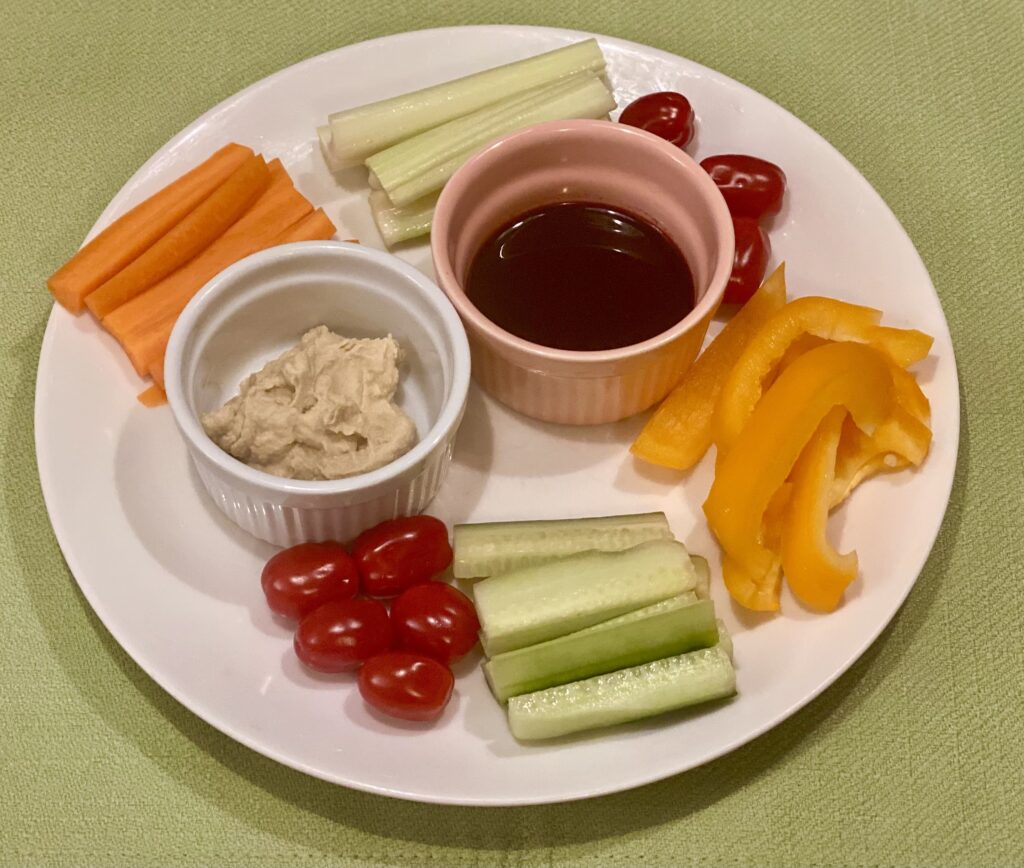
Put out a platter of sliced carrots, celery, cucumbers, peppers, even zucchini, broccoli and cauliflower accompanied by a small bowl of hummus or dressing. This is a spin on tip number one; just providing sliced prepared vegetables encourages eating more vegetables. This time you put it with a little dip. Make sure that the dressing or hummus you provide is a healthy version without added sugars, seed oils, or preservatives. You can put this out as an appetizer, a side with a meal, an afternoon school snack, or even included as part of lunch. The vegetables provide such a satisfying crunch factor that the kids may not even miss chips. Plus the vegetables add a wide range of micronutrients and fiber that feed the gut microbiome. Carrots are my go-to as all of my kids liked them raw, but providing a variety of vegetables goes a long way to reach the goal of eating 30 different plant foods a week. You can provide a couple dip options to allow the kids to select what they prefer. Try cutting the carrots into large slices using a crinkle cutter to make interesting slices. If raw broccoli or cauliflower do not appeal to your kids, try lightly steaming them then dunking them in ice water which will preserve the crunchiness but cut the bitterness and enhance the sweetness of the vegetables.
Tip number 9: Plant a Garden with Your Children
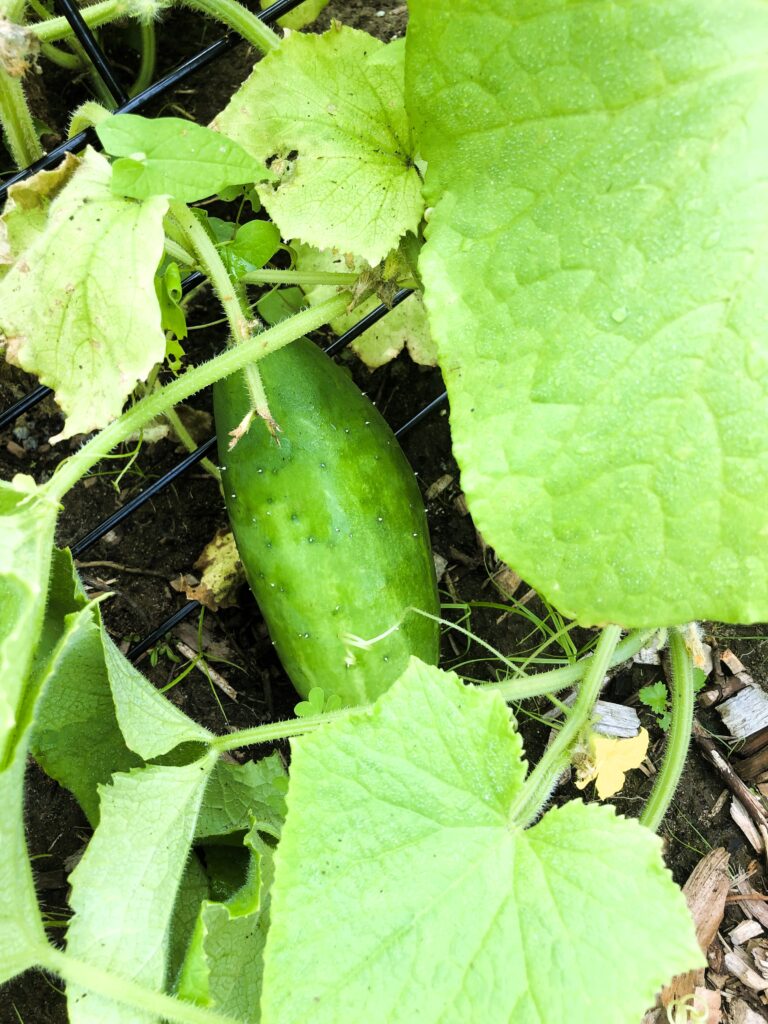
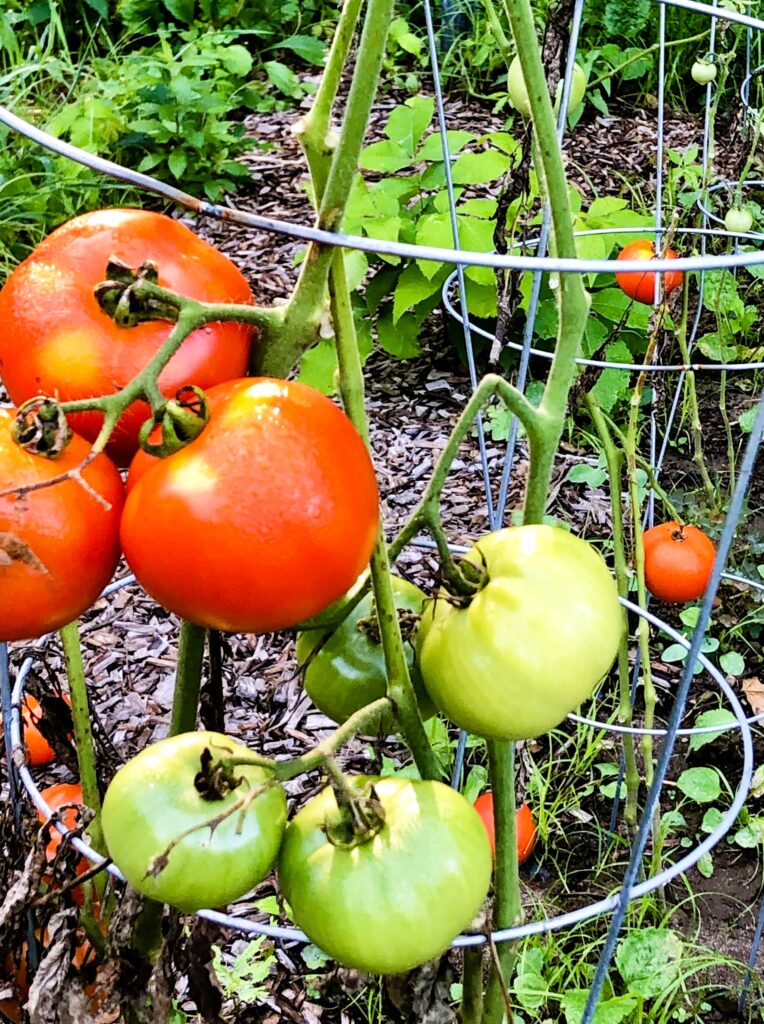
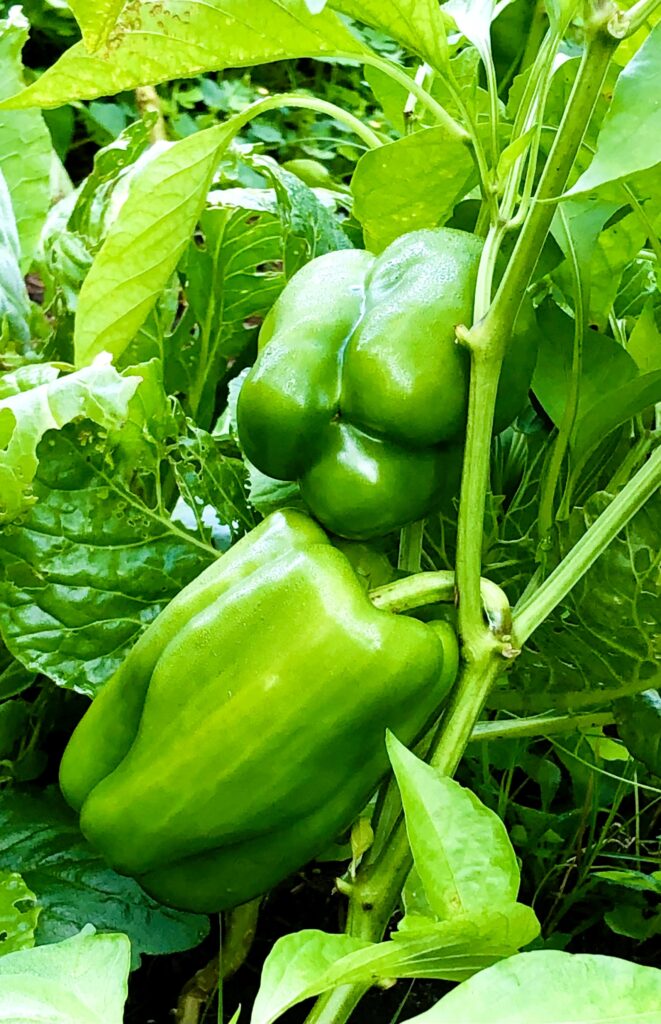
Children will be more open to eating vegetables that they have grown themselves.
This is a longer lead item, but can be very effective and instill a lifelong affinity for whole foods. When children are invested in the growth of the plant they have a sense of pride and accomplishment and wonder. They can watch the plant growing, watch it flower, see the flower drop off and the tiny beginning of the vegetable, then see it grow and mature until it’s ready to harvest. They will be eager to try a vegetable they have picked and brought into the kitchen themselves. Or maybe it doesn’t even make it to the kitchen! When my children were young, they would stand in the garden picking cherry tomatoes and popping them right into their mouths. Let the kids eat directly from the garden. Don’t worry too much about washing the vegetables as long as you grow them without pesticides. Turns out that the microbes on the plants might be beneficial for the gut microbiome and possibly a source of vitamin B12. Start small with just a few plants. Green beans are a great vegetable to start with because they sprout so quickly, bear so many individual pods, and are relatively easy to grow. Cherry tomatoes are another easy vegetable that bears a multitude of bright red little tomatoes on each plant. Very little space is needed to start a garden and you should skip the tilling as it actually can detract from the soil health. If you don’t have a little space in your yard, try growing in containers or maybe join a community garden.
Tip number 10: Cook with Your Children

When children are involved in the food preparation process, they will be more likely to eat what they have made.
I am a huge proponent of making your own food and especially when there are vegetables involved. It easily allows you to increase your consumption of whole foods and decrease your consumption of processed foods. Getting children involved has multiple benefits. They will want to taste the fruits of their labor which will get them to eat more vegetables. They will even learn how seasonings and cooking methods can turn something they didn’t think they liked into something they love. Making your own food teaches children to cook for themselves, a skill that is often overlooked in our busy lives. It gives them a sense of confidence and pride – they made something for their family. It builds strong family relationships and teaches interdependence and cooperative life skills. It also teaches math skills and the ability to follow instructions. Initially it will make cooking take longer, but it will be a profitable investment in the long run. As they get older they will be able to do so much more. Allow the kids to do as much as they can. You may not want them handling knives at young ages, although I’ve heard that Inuit children are taught to use knives at 2 years old! Just make sure you supervise as much or little as is appropriate. Again, start with simple recipes and work up to more complex as time allows. Making salads is easy. You can cut or supervise the cutting of vegetables. Give them choices about what to include. Then let them add it all to the salad bowl and mix up a quick and easy balsamic dressing like this Basic Balsamic Vinaigrette. Roasting vegetables is also quite simple and the kids can experiment with the different spices and vegetable combinations. Soups are also a simple and fun food to make. You can start with my butternut squash soup. An adult should cut the squash, but the kids can remove the seeds, prepare it for roasting, and scoop out the flesh when cooked and cooled. They can saute the onions, measure and add the spices, and run the blender to puree the soup. I have many fond memories of cooking with my children. By the time they went to college, they knew how to make much of their own food.
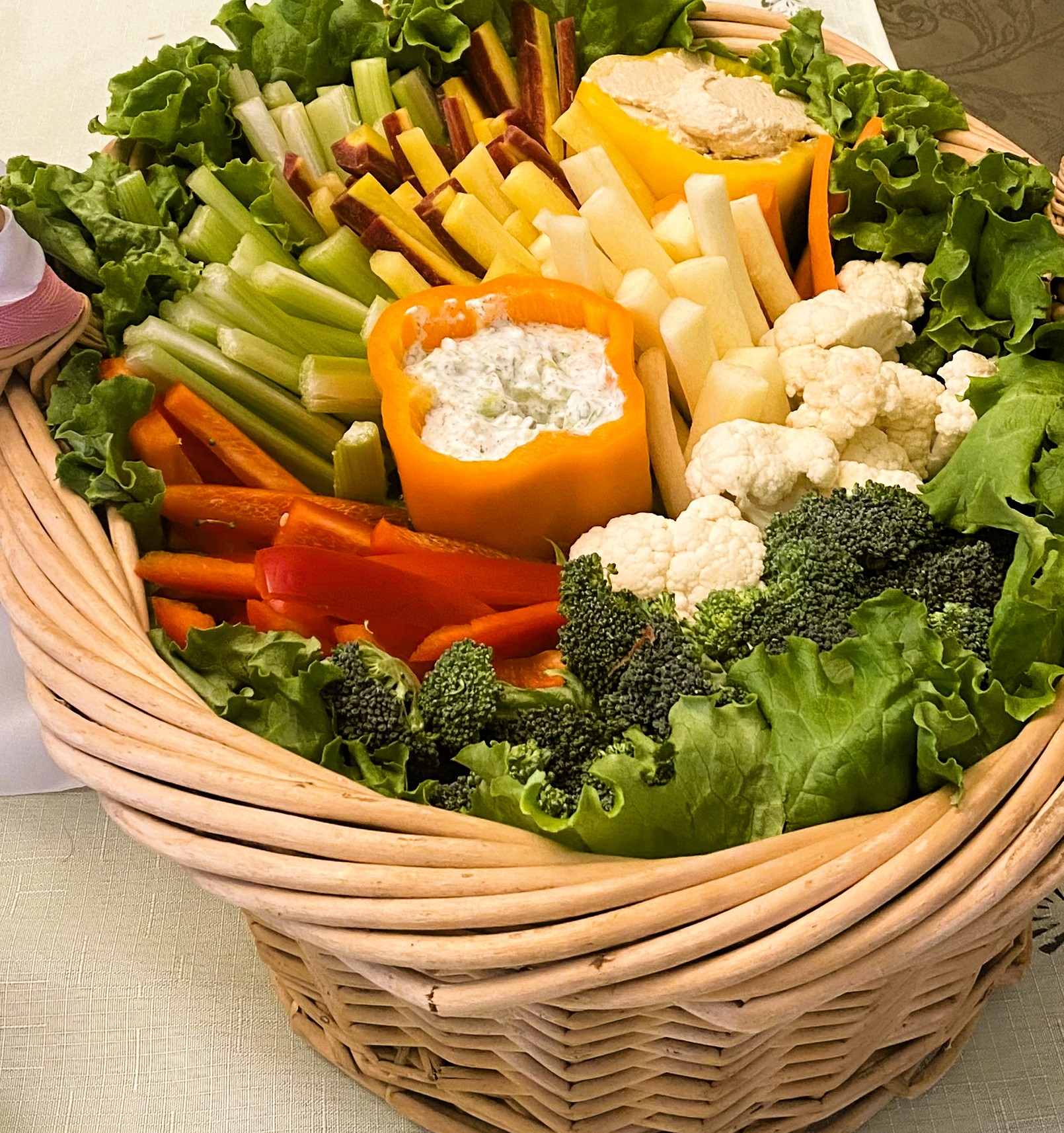
Leave a Reply